A Local Community is in Your Services While our Based in Joshimath & Govinddham
"Born in Himalayas & Run by Himalayans"
Why us ? Adventure Holidays are our specialty. We create exciting Himalayas
Trekking Tours Packages and itineraries for everyone, from big families to
solo adults. Our small group trips let you explore unfamiliar places, trek
through incredible mountain scenery, get active and enjoy the local
culture. Be inspired and join us on your next adventure holiday in the Himalayas.
"Valley of Flowers” is the name of the Himalayan area in Uttarakhand state in India. In 1931 the English mountaineer
Frank Smythe stumbled across the Bhyundar Valley, an 8 km long
glacier corridor in Chamoli -one of the district of Uttarakhand
state .This area, surrounded by snow-capped mountains and
carpeted with over 500 species of flowers , soon became a
protected site.
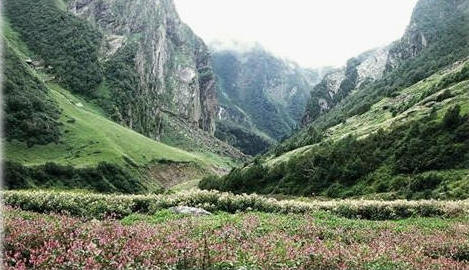 Nature
had designed this valley (3,658 m. to 3962 m) for the dedicated
outdoors person .It is a 13 km trek from Govindghat to
Ghangharia. where there is a tourist bungalow. No one is allowed
to camp in the Valley of Flowers. From Ghanghria its another 4
km trek to the valley. Nealy 10 km long and almost 2 kms wide,
the valley is ringed with snow-capped mountains and watered by
streams rising in the mountains. its accessible from late April,
but grandest from late July to the end of August. Literally
hundreds of wild flowers bloom in this valley including the rare
Himalayan Blue Poppy .Tread with caution because your visit
should not endanger the things you have come to see. Also carry
a little salt. The valley is infested with leeches in the
wettest weather when the flowers are at their best. It is 36 Km
from Joshimath. A naturalist’s delight, the valley is reputed to
be the largest repository of the wild flowers in the natural
surroundings in the world over 300 species have been
identified. Only day visits are permitted. Night halt
accommodation is available at Ghanghria. Nature
had designed this valley (3,658 m. to 3962 m) for the dedicated
outdoors person .It is a 13 km trek from Govindghat to
Ghangharia. where there is a tourist bungalow. No one is allowed
to camp in the Valley of Flowers. From Ghanghria its another 4
km trek to the valley. Nealy 10 km long and almost 2 kms wide,
the valley is ringed with snow-capped mountains and watered by
streams rising in the mountains. its accessible from late April,
but grandest from late July to the end of August. Literally
hundreds of wild flowers bloom in this valley including the rare
Himalayan Blue Poppy .Tread with caution because your visit
should not endanger the things you have come to see. Also carry
a little salt. The valley is infested with leeches in the
wettest weather when the flowers are at their best. It is 36 Km
from Joshimath. A naturalist’s delight, the valley is reputed to
be the largest repository of the wild flowers in the natural
surroundings in the world over 300 species have been
identified. Only day visits are permitted. Night halt
accommodation is available at Ghanghria.
Flowers mostly orchids, poppies, primulas, calendulas,
daisies and anemones carpet the ground. Alpine forests of birch
and rhododendron cover a part of the area, and are home to tahr,
snow leopard, musk deer, red fox, common langur, bharal, serow,
Himalayan black bear and a huge variety of butterflies.
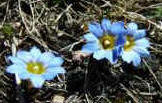 There
is no settlement in the national park and grazing in the area
has been banned. The park is open only in summers between June
and October, being covered by heavy snow during the rest of the
year. The Government of India has now declared the valley a
National Park. It is a unique park, perhaps the best in the
whole world. May and June is the time to see rhododendrons. Ju
ne and July is the time for lilies and orchids. July and August
is for primulas, also called primrose. It is a common name for a
medium-size family of flowering plants most abundant in the
North Temperate Zone. There
is no settlement in the national park and grazing in the area
has been banned. The park is open only in summers between June
and October, being covered by heavy snow during the rest of the
year. The Government of India has now declared the valley a
National Park. It is a unique park, perhaps the best in the
whole world. May and June is the time to see rhododendrons. Ju
ne and July is the time for lilies and orchids. July and August
is for primulas, also called primrose. It is a common name for a
medium-size family of flowering plants most abundant in the
North Temperate Zone.
Valuable information about valley of flowers |
| Area |
87.5 sq km |
Guide Charges : Rs.2000 |
| Languages |
Hindi, Garhwali |
Mules charges : Rs.950 |
| Altitude |
3,250 to 6,750 m above sea level |
Porters charges : Rs.950 |
| Rainfall |
1800.2 mm |
Entrance Fees : Rs.650/150 |
| Maximum Temperature |
17°C |
Hotels charges : Rs.1500 / 2500 |
| Minimum Temperature |
7°C |
Camping Tents : Rs.3000 |
| Best time to visit |
July-August-September |
Doctors Not Available |
|
| |
| How to access valley of flowers national park |
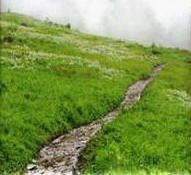 To reach the valley, trek begins at Govind Ghat. From here onwards, your eyes will be treated to scenic beauty of the nature at its undisturbed best - wild flowers, waterfalls, springs, rocky boulders and in between glimpses of snow clad peaks. Discovery Journeys and overnight stay is not allowed in the valley so Ghanghria serves as the base camp during the trek.
The Valley of Flowers is a riot of color in August/September. Well over a thousand varieties of flowers, shrubs, orchids and plants in myriad hues, differing textures and colors paint the valley in a gorgeous display |
|
The Valley of Flowers is a beautiful meadow located at an altitude of about eleven thousand feet. It is the valley of the stream Pushpavati, a tributary of Alaknanda. Frank Smythe discovered 'The Valley of Flowers' in 1931 on his way back after a successful expedition to Mt. Kamet. Ferns, dwarf iris, dwarf larkspur, dwarf rhododendrons, primula, blue poppies, fritillaria, asters, potentillas, inula grandifloras and hundreds of other species grow wild in the valley.
|
|
| Most popular Trekking Tours in Uttarakhand Himalayas ----> Click here for more details |
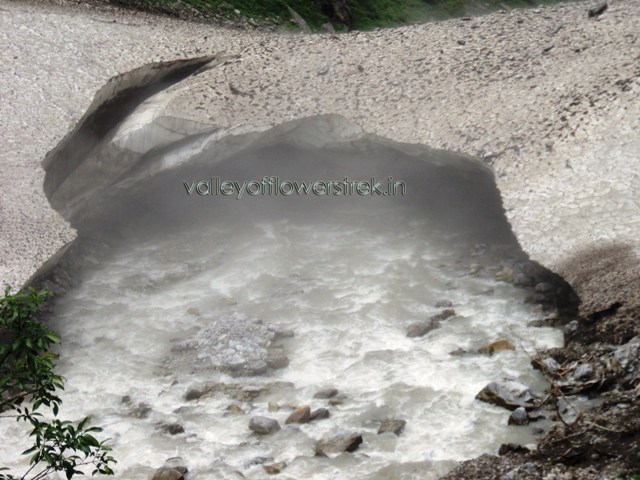
Valley Of Flowers National Park Trek 2022 -View of Glacier inside valley of flowers trek
Family Trip :: Explore the nature with your family and kids :: Click here for more details
Timeline:: source http://en.wikipedia.org/
1862: The Pushpawati valley was discovered by Col. Edmund Smyth;
1931: The valley visited by the climberFrank S. Smythe who wrote a book publicising the "Valley of Flowers";
1936: The upper Nanda Devi basin was reached and described by mountaineers E.Shipton & N.Odell who climbed Nanda Devi
1939: The basin established as the Nanda Devi Game Sanctuary by Government Order 1493/XIV- 28 of 7/01;
1962: Border disputes closed the area to traffic, altering the local economy;[citation needed]
1974-82: The sanctuary was opened to mountaineering, but the ensuing degradation led to its closure to all users;
1980: The park was established as Sanjay Gandhi National Park by Notification 3912/ XIV 3-35-80; grazing and mountaineering stopped;
1980: The Valley of Flowers was declared a national park by Government Order 4278/XIV-3-66-80 under the provisions of the Wildlife Protection Act of 1972, for the conservation of its flora;
1982: The park was renamed Nanda Devi National Park;
1988: The Nanda Devi National Biosphere Reserve established (223,674 ha) with the national park as core zone (62,462 ha) and a 514,857 ha buffer area surrounding both sites; restrictions were imposed on the rights of nearby villagers;
2000: The Biosphere Reserve extended by the government to 586,069 ha and the Valley of Flowers National Park was added as the second core zone (62,462 ha+ 8,750 ha, totalling core areas of 71,212 ha);
2004: The two core zones and buffer zone designated a UNESCO MAB reserve.
There are no accommodation facilities inside the Valley in Flowers as visitors are not allowed to stay inside the park. Guest House / Gurudwara / Camps / Hotels and lodges are available in Ghangaria.
Don not through or use plastic inside the valley. There are no options to eat inside the park too. It is advisable to carry enough food stocks to last your trek. Ghangaria is the place where one can find restaurant and hotels.
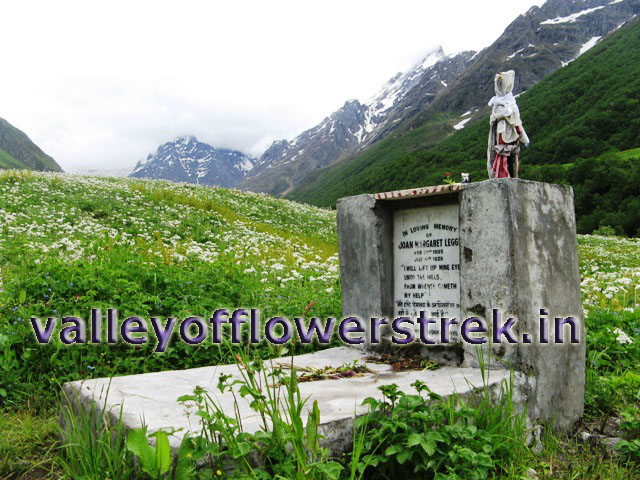
The average minimum and maximum temperature of Valley of flowers is 7 to 28. The best time to visit Valley of flowers is Mid July till Early September. Monsoon is the best time when flowers get bloom.
If you like to see snow and glaicer then best time to visit valley is June, and if you are nature lover and would like to explore the flowers then you must visit in pre monsoon and monsoon between july mid to end august. From September early the flowers will be not found in rows only few varity of flowers will left till rain get end in September and from last Week of September the valley get dry and wait for snow.
<<Read here more about best time to visit the valley of flowers national park>>
Valley Of Flowers Trek Program
Valley of Flowers Trek Program
The Valley of Flowers National Park is the second core zone of the Nanda Devi Biosphere Reserve. The credit for the discovery of the Valley of Flowers goes to the British mountaineers Franks S. Smythe and R.L. Holdsworth who incidentally reached this valley after a successful expedition of Mount Kamet in 1931.
Valley of flowers 5 nights 6 days Tours
Day 1: Arrive at Joshimath from Dehradun/Haridwar. Dinner stay in Lodge. Drive 8/9hrs.
Day 2: Drive to Govindghat 28km drive and Trek to Ghangaria – 14 Km – 6/7 hours. Lodge. Breakfast lunch packed and dinner
Day 3: Morning after breakfast Trek to Valley of Flowers and back to Ghangaria – 8 Km – 6/7 hours. Lodge
Day 4: Early breakfast and trek 7km to Hemkund Sahib visit lake and laxman mandir back to Ghangaria stay up here.
Day 5: Trek down to Govindghat – 14 Km – 6 hours. Drive to Joshimath. Stay up here.
Day 6: Morning breakfast and drive to Haridwar / Dehradun.
Trip end up here.
Trip cost @ INR 9999 per head. (Group seize should be above 18 person) – Rooms on Triple / Quad sharing
Deluxe price @ INR 17999 per head. (Deluxe tempo + Deluxe hotels/Swiss camps in entire trip will qualified guide entrance fees) – Rooms on double sharing / Triple sharing
Include – Two night stay in Joshimath/Govindghat + 3nights at Ghangaria
Day 1 dinner , Day 2 B/L/D, Day 3same, Day 4 Same.
Professional guide and escort on tour from Govindghat to Govindghat.
Stay in lodges / Deluxe Hotels / Swiss Camps at Ghangaria on Triple and Quad sharing rooms.
|
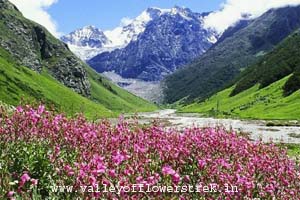
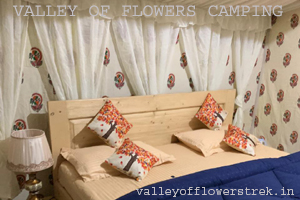
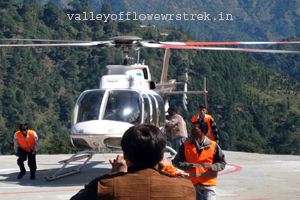
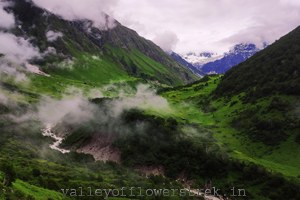
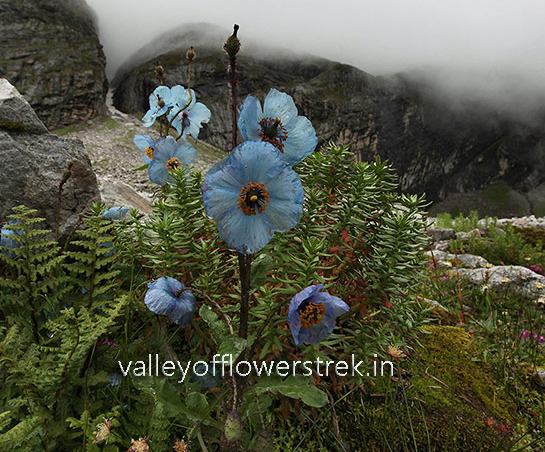
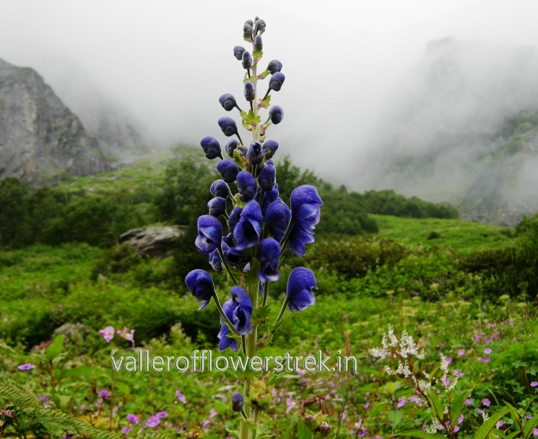
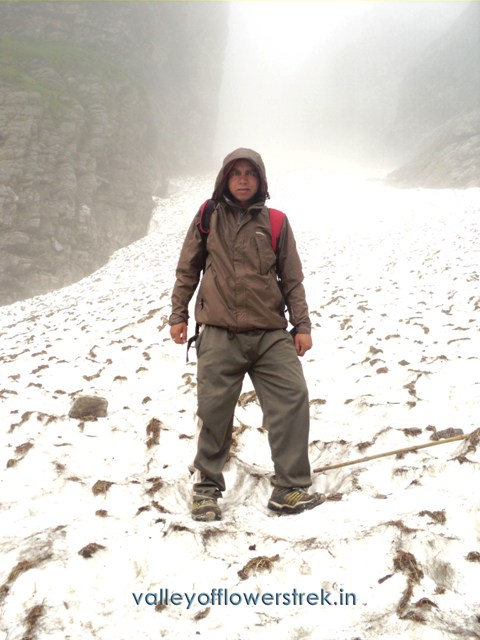
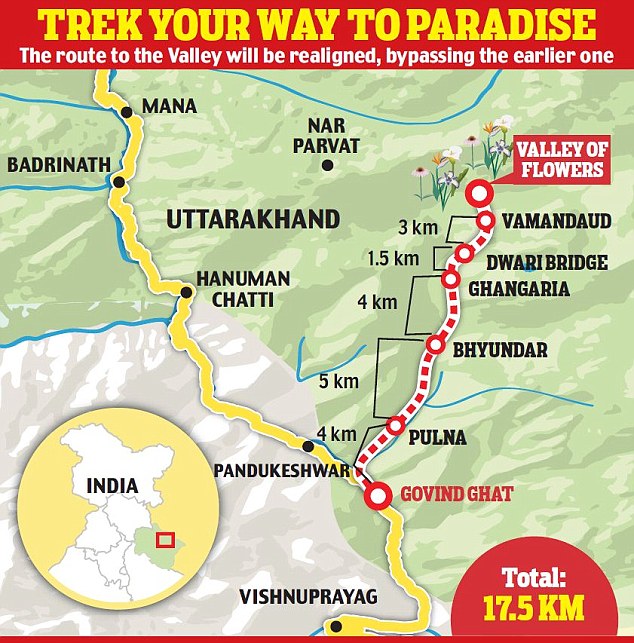
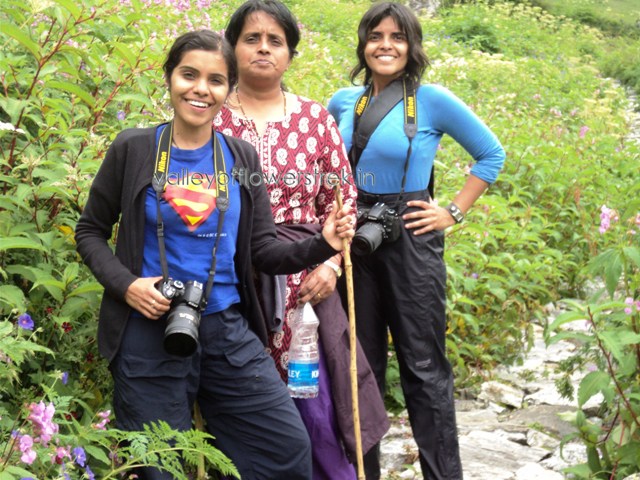
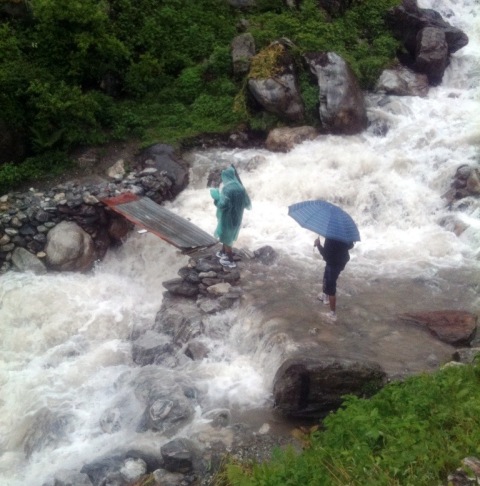
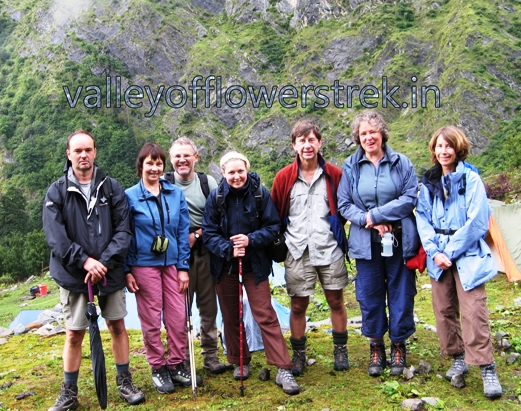
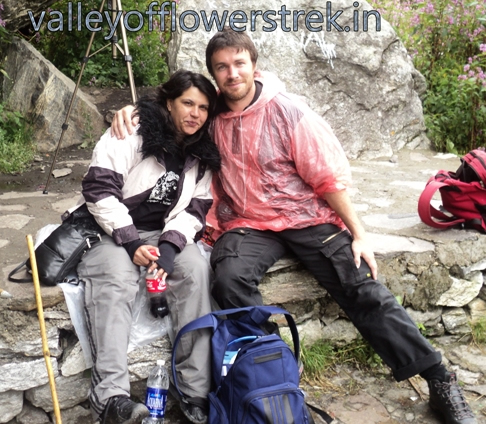
![]()
![]()
![]()
![]()
![]()
![]()